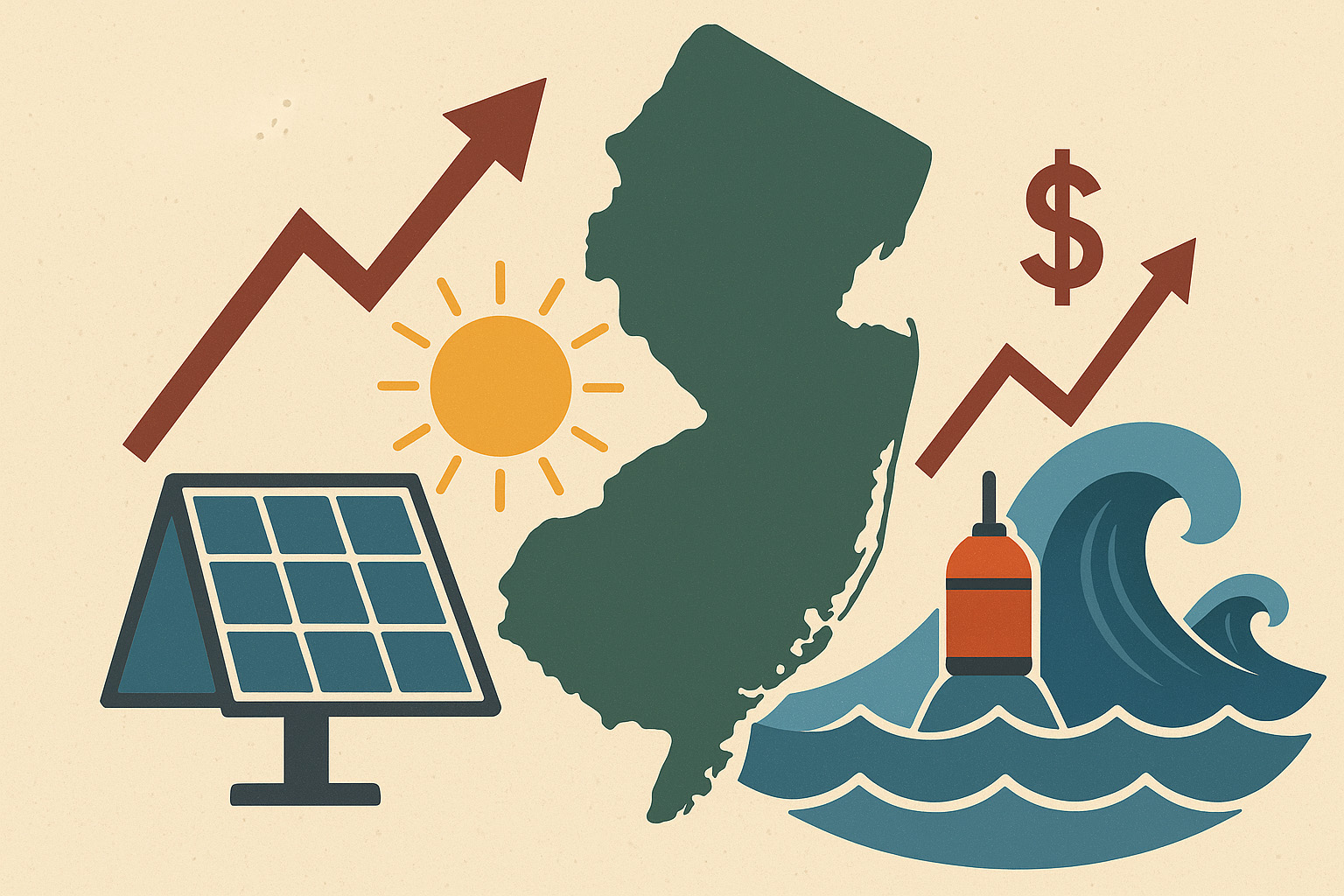3
With electricity bills soaring, New Jersey lawmakers are exploring alternative renewable energy sources — including the untapped potential of ocean wave and tidal power — as part of a broader strategy to reduce costs and meet clean energy goals.
On June 12, the Assembly Telecommunications and Utilities Committee advanced A-1478, a bill directing the state Board of Public Utilities to study the viability of ocean-based energy. Supporters say New Jersey’s extensive shoreline positions it to be a national leader in marine renewable technology.
Custom-designed buoys, converters and other equipment could be used to harness energy from tides and waves for consumer use.
“Due to our vast shoreline and offshore resources, New Jersey could be a pioneer in exploring and evaluating wave energy from economic as well as environmental perspectives on the Northeast coast,” said Jasmine Mettelus of the New Jersey League of Conservation Voters.
Mettelus said ocean-based energy could complement more established renewables like solar and wind. The state has committed to 100% clean energy by 2035, but progress has been slowed by the rollback of federal environmental policies under former President Donald Trump.
Electricity prices in New Jersey jumped as of June 1, driven by a regional transmission auction that set new rates. According to state regulators, the average household can expect to pay about $20 more per month. PJM Interconnection, the regional grid operator, cites increased demand from artificial intelligence data centers and a resurgence in U.S. manufacturing as contributing factors.
Some Republican lawmakers expressed skepticism about the feasibility of ocean energy.
“In theory, this sounds like it could be good, but some of the parallels to offshore wind are concerning to me,” said Assemblyman Paul Kanitra, a Republican from Point Pleasant Beach. “How much is this going to industrialize the ocean? How is it going to affect our marine and fishing industries?”
Assemblyman Christian Barranco, a Republican from Pompton Lakes, voted against the bill and called for a focus on immediate solutions.
“This is not going to help us in any way with the freight train that we’re facing of electrical costs in New Jersey,” Barranco said. “Everything that takes away from the fact that we need generating assets, turbines spinning right now, is getting in the way of what we need to do to make sure we don’t go broke paying our electric bills.”
The same day, the Senate Environment and Energy Committee advanced S-4530, which would significantly expand New Jersey’s community solar program. The bill proposes opening registration for up to 3,000 megawatts of additional capacity — enough to power more than 500,000 homes.
Community solar projects allow neighborhoods to benefit from shared solar installations, offering access to residents who rent or live in multi-unit buildings without rooftop space.
“Solar is critical because it allows for a just transition and equal access to clean energy, including … New Jerseyans who may rent their homes and not have access to their own roofs,” said Jesse Sutherland of the New Jersey League of Conservation Voters.
Not everyone is on board with the scale of the proposed solar expansion. Maura Caroselli, managing attorney for gas and clean energy at the New Jersey Division of Rate Counsel, warned about potential costs to ratepayers.
“While we appreciate the goals of this bill, we are concerned that it is too much, too fast,” Caroselli said. “We need to make sure there is sufficient generation to meet this goal, and that the subsidies to be paid by ratepayers are not over-burdensome.”
Ben Dziobek, founder of the Climate Revolution Action Network, supported the bill, citing the urgent need for energy alternatives.
“We are in an extreme time of energy need, with expanding usage from AI and other industries,” Dziobek said. “Right now we also have lost the majority of our wind industry in New Jersey. We’re going to need to find ways to get that energy from somewhere else.”
